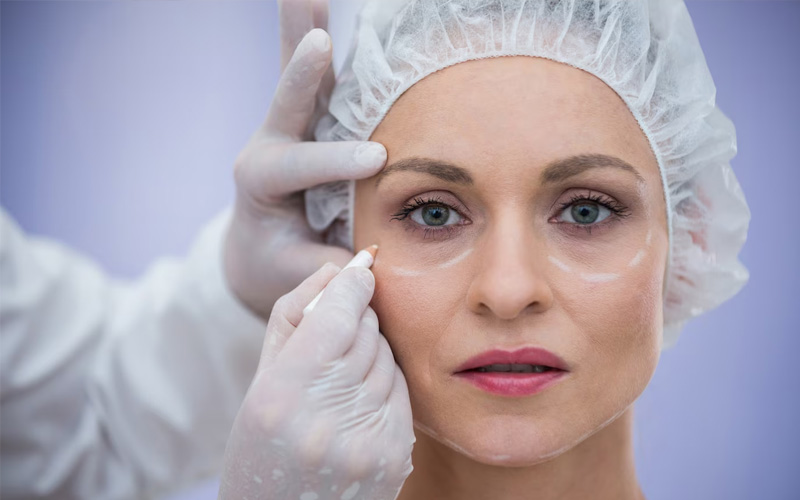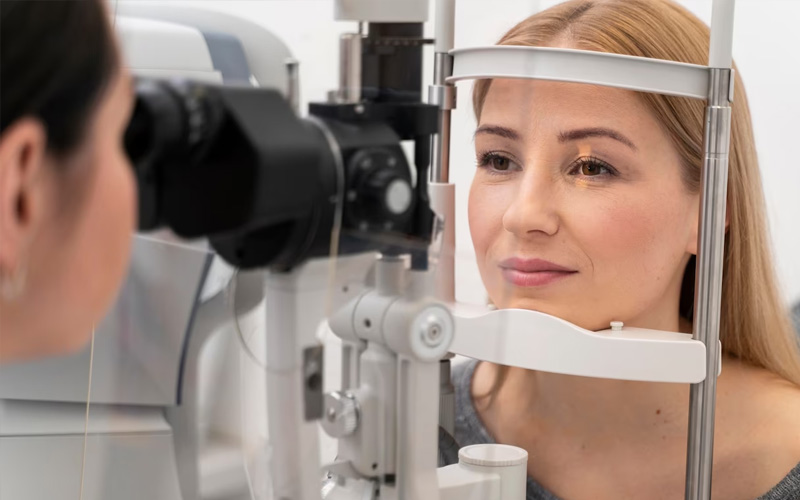Revision Blepharoplasty
Blepharoplasty (eyelid surgery) has become one of the most frequently performed cosmetic surgeries worldwide in recent years. Just as with other facial procedures, factors such as family history, facial structure, and genetic predisposition play an important role in the eye area. However, with time, the tissues around the eyes inevitably loosen, and the effects of gravity cause the upper eyelids to droop. This can result in heavy, drooping upper eyelids that may even impair vision, as well as sagging, baggy lower eyelids, giving a tired and aged appearance. As one of the most popular surgeries globally, the risk of complications has also increased proportionally.
Revision blepharoplasty refers to corrective eyelid surgeries performed to address complications that have arisen from previous eyelid operations. These complications can range from subtle asymmetries to more significant issues, such as impaired eyelid movement, difficulty in opening or closing the eyes, pronounced asymmetry, and deformities of the eyelid shape. In some cases, these issues may also affect the eyes themselves, leading to more serious outcomes such as vision loss. Therefore, before any intervention around the eyes, a detailed eye examination is essential to identify potential risk factors accurately.
Additionally, throughout the surgical process and post-operative recovery, it is vital to protect the eyes and ensure close follow-up care. If complications arise, early detection and timely intervention are crucial not only for correcting aesthetic concerns but also for preventing more severe vision-related problems.
When complications develop after eyelid surgery, it is important to consult a highly experienced surgeon who specializes in revision blepharoplasty. These procedures require expertise, as the surgeon must accurately identify the problems caused by the initial surgery and apply the correct interventions at the right time to ensure both aesthetic improvement and protection of vision.
Key Considerations in Revision Blepharoplasty:
- Patient Communication: Establishing clear communication with the patient is essential. Patients may have undergone surgery with aesthetic goals but are often left unhappy due to complications. Therefore, it is critical to thoroughly explain the nature of the complications, what corrective measures can be taken, and the limitations of further surgery.
- Potential Vision Risks: In cases where there are potential risks to vision, these are more serious and may need to be addressed urgently. Depending on the situation, correction may require one or more surgeries, including tissue transfers from other parts of the body.
- Aesthetic and Functional Goals: Revision blepharoplasty is not just about improving the appearance but also about restoring proper eyelid function. The eyelids and surrounding structures play a vital role in protecting the eyes and maintaining vision, so any surgical plan must prioritize both aesthetics and eye health.
- Specialized Care: Since the eyelids and the surrounding tissues are delicate and play a crucial role in vision, any procedure involving these areas must be meticulously planned. In the event of complications, timely and appropriate interventions are key to both preserving vision and achieving an aesthetically pleasing outcome.
In summary, revision blepharoplasty is a complex and delicate procedure that requires a high level of expertise. Establishing a healthy doctor-patient relationship, being transparent, and proceeding carefully and patiently are essential elements for successfully rehabilitating patients who have experienced complications from previous eyelid surgeries.









